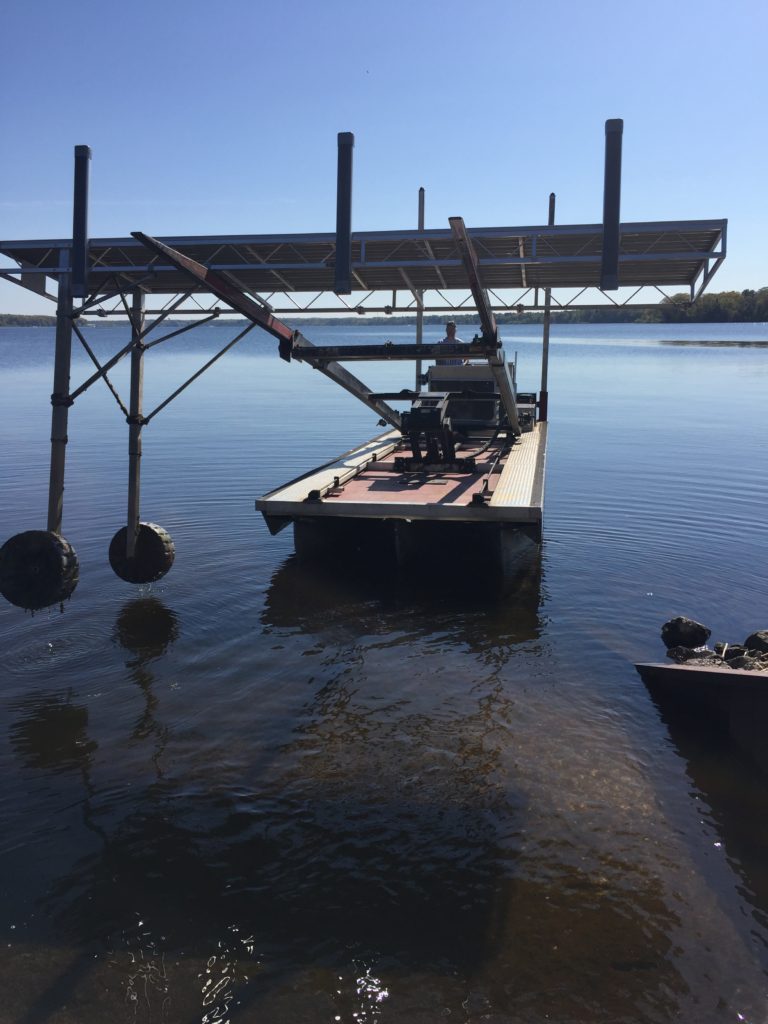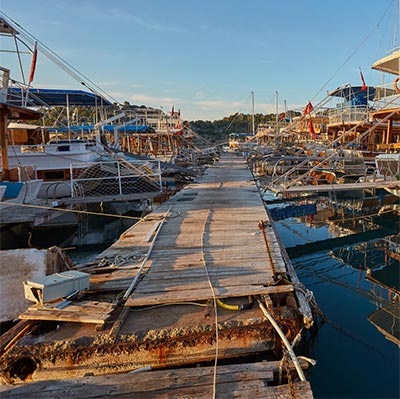Necessary Guide to Budget Friendly Dock Repairs for Homeowners
Necessary Guide to Budget Friendly Dock Repairs for Homeowners
Blog Article
Efficient Dock Repair Service Techniques: Making Sure Structural Stability
Making certain the structural honesty of docks with reliable repair work strategies is paramount for the durability and safety and security of marine centers. Ultimately, selecting the ideal repair materials, such as corrosion-resistant alloys and composite products, is important for durability.
Evaluating Dock Damages
Examining dock damages is an important initial action in making certain the architectural stability and security of any type of docking facility. Key aspects to examine include the dock's structure, pilings, outdoor decking, and equipment (Dock Repairs).
Structural engineers or qualified inspectors generally perform these assessments making use of specialized methods and tools. Underwater inspections could utilize sonar tools or from another location operated cars (ROVs) to spot submerged damages. Over water, aesthetic evaluations are matched by utilizing moisture meters and various other analysis tools to reveal underlying concerns not promptly visible to the nude eye.

Picking Repair Service Products
Picking the appropriate repair materials is a critical action in the dock repair procedure, one that straight affects the long life and performance of the repaired structure. Material choice should be driven by aspects such as environmental conditions, load-bearing demands, and compatibility with existing dock elements. For instance, wood is a conventional option for docks due to its natural strength and visual charm. However, selecting the right sort of timber, such as pressure-treated lumber or naturally rot-resistant species like cedar or teak wood, is critical to hold up against marine atmospheres.
In addition to timber, composite materials are significantly prominent due to their sturdiness and low upkeep demands. Compounds, normally made from a blend of plastic and wood fibers, supply exceptional resistance to rot, insects, and UV damages. For metal anchors, choosing corrosion-resistant alloys such as galvanized steel or marine-grade light weight aluminum is important to prevent corrosion and guarantee architectural stability in saline water conditions.
Epoxy resins and marine-grade sealers are essential for fixing splits and sealing joints, offering a water-proof obstacle and enhancing the dock's total strength. By diligently selecting top notch products, dock repairs can accomplish long-lasting outcomes, therefore protecting versus future degradation and making certain secure, reputable usage.
Structural Reinforcement Methods
Efficient structural reinforcement techniques are critical in making certain the security and durability of dock repair services. This technique is especially effective for docks revealed to hefty tons or severe environmental problems.
An additional vital strategy is the application of fiber-reinforced polymers (FRP) These materials provide high strength-to-weight ratios and excellent resistance to deterioration, making them excellent for strengthening concrete or wood anchors. FRP can be applied in sheets or strips and bound with epoxy resins to boost structural integrity.
Supporting and anchoring systems additionally play a vital function in architectural reinforcement. Cross-bracing, using steel or wooden beam of lights, can counteract side forces, lowering swaying and activity. Anchoring systems, such as helical piers or driven heaps, offer a secure foundation by moving loads to much deeper, much more secure soil layers.
Last but not least, the integration of load-distribution plates can aid distribute weight extra evenly throughout the dock's surface, alleviating local tension factors. These methods jointly ensure that docks continue to be safe and robust, qualified of withstanding the rigors of their functional environment.
Advanced Repair Service Approaches

Another advanced technique entails undersea welding, which permits for repairs to be conducted without the need to dewater the area. This approach is specifically advantageous for addressing structural issues in immersed dock parts, making certain marginal interruption to operations. Enhanced welding techniques, coupled with robot systems, provide precision and reliability, thereby expanding the life expectancy of the dock.
Furthermore, cathodic protection systems are implemented to protect against deterioration in metal dock structures. By making use of sacrificial anodes or satisfied present systems, these techniques properly alleviate the electrochemical processes that lead to product degeneration.
Lastly, progressed monitoring modern technologies, such as architectural health monitoring (SHM) systems, supply real-time data on the problem of dock structures. These systems make it possible for positive maintenance and prompt treatments, eventually ensuring the lasting structural honesty of the dock.
Maintenance and Avoidance
Maintenance and avoidance are fundamental ideas that underpin the longevity and security of dock frameworks. Routine examinations are vital, permitting for early discovery of wear and tear, possible weaknesses, and environmental influences. A proactive technique, involving regular look for corrosion, rot, and architectural changes, reduces pricey repair work and extends the dock's functional life.
Safety nets need to include using safety over here finishings to steel components to defend against corrosion and utilizing treated wood to withstand decay. In addition, guaranteeing correct water drainage and ventilation can avoid water accumulation, which is an usual root cause of architectural deterioration. Including quality products and sticking to producer guidelines during building and fixing stages also play essential functions in improving longevity.

Training personnel in dock upkeep ideal methods guarantees consistent application of preventative actions. Leveraging technical advancements, such as drones for inspections and sensing units for real-time tracking, can even more boost upkeep efforts. By focusing on maintenance and prevention, dock proprietors can make sure structural honesty, functional safety, and cost-efficient administration over the dock's lifespan.
Verdict
In verdict, maintaining the structural honesty of aquatic centers necessitates extensive dock fixing techniques. Advanced repair work methods, combined with normal upkeep techniques, ensure the dock remains functional and risk-free under varied browse around this web-site ecological problems.
Ensuring the structural integrity of docks with efficient fixing strategies is paramount for the longevity and safety of aquatic facilities.Selecting the appropriate fixing products is an essential action in the dock repair procedure, one that directly influences the longevity and performance of the fixed framework.Efficient architectural reinforcement techniques are crucial in guaranteeing the stability and longevity of dock fixings. By focusing on upkeep and prevention, dock owners can make certain architectural stability, operational safety and security, and cost-efficient monitoring over the dock's life webpage expectancy.
In conclusion, maintaining the architectural stability of marine centers requires extensive dock repair strategies.
Report this page